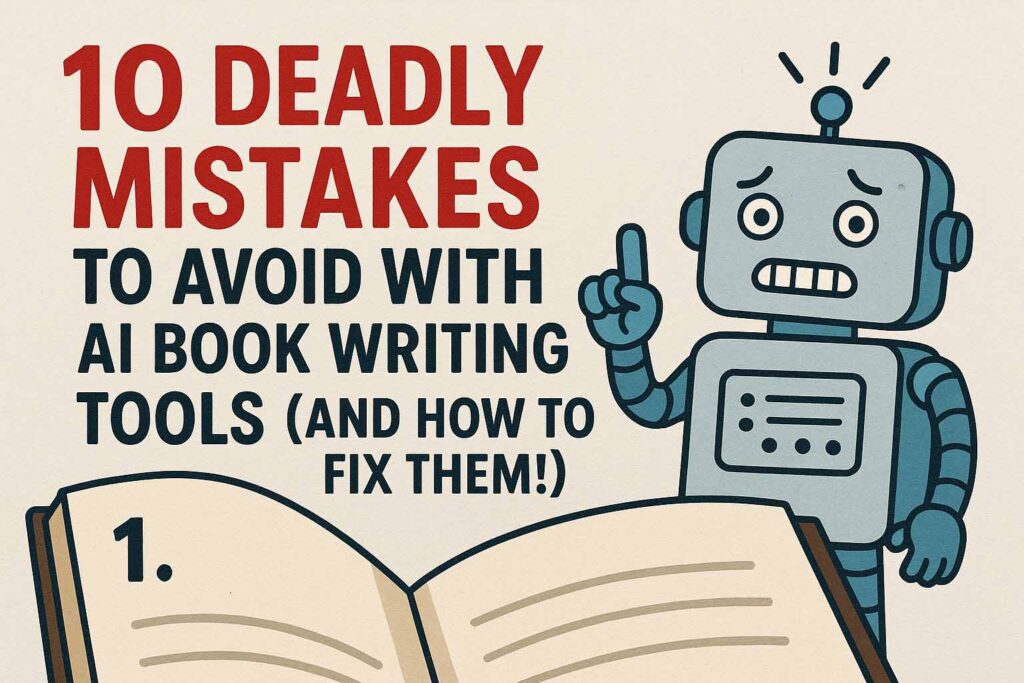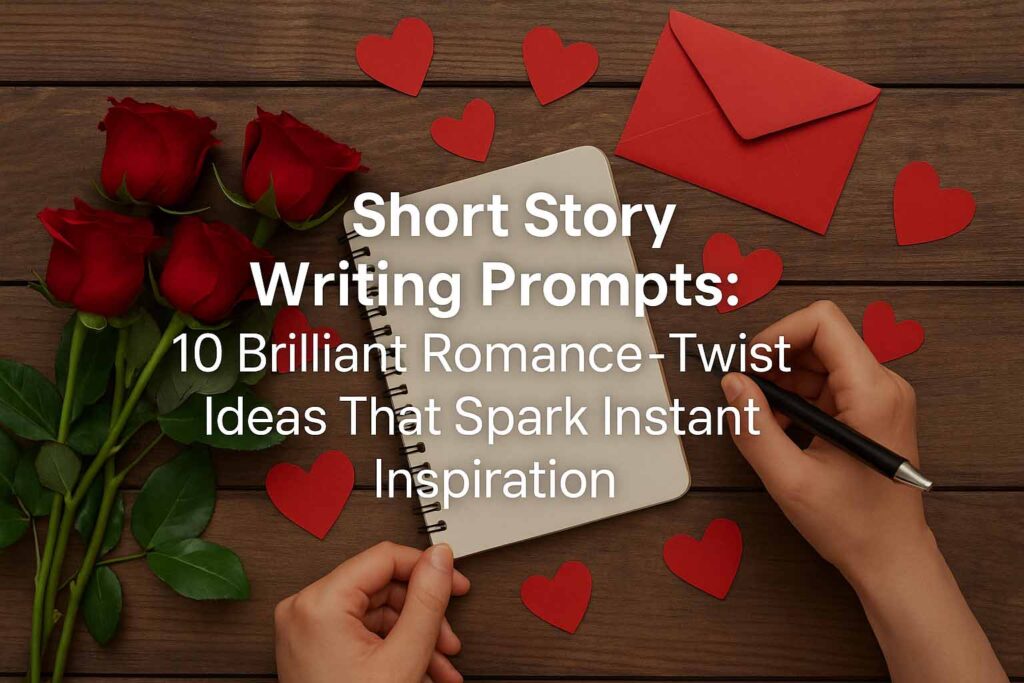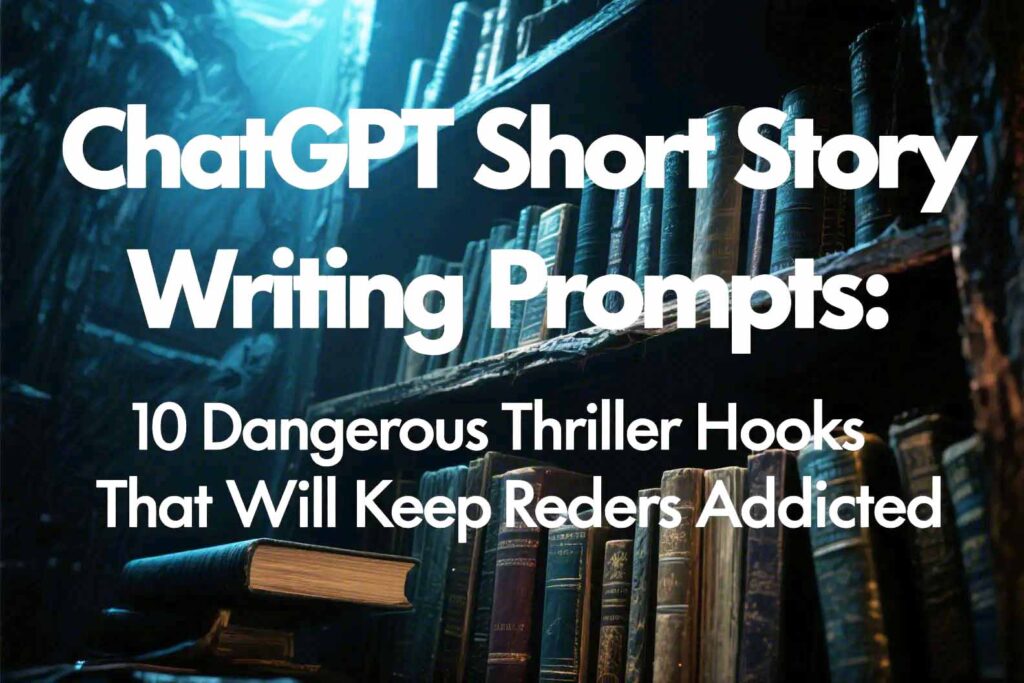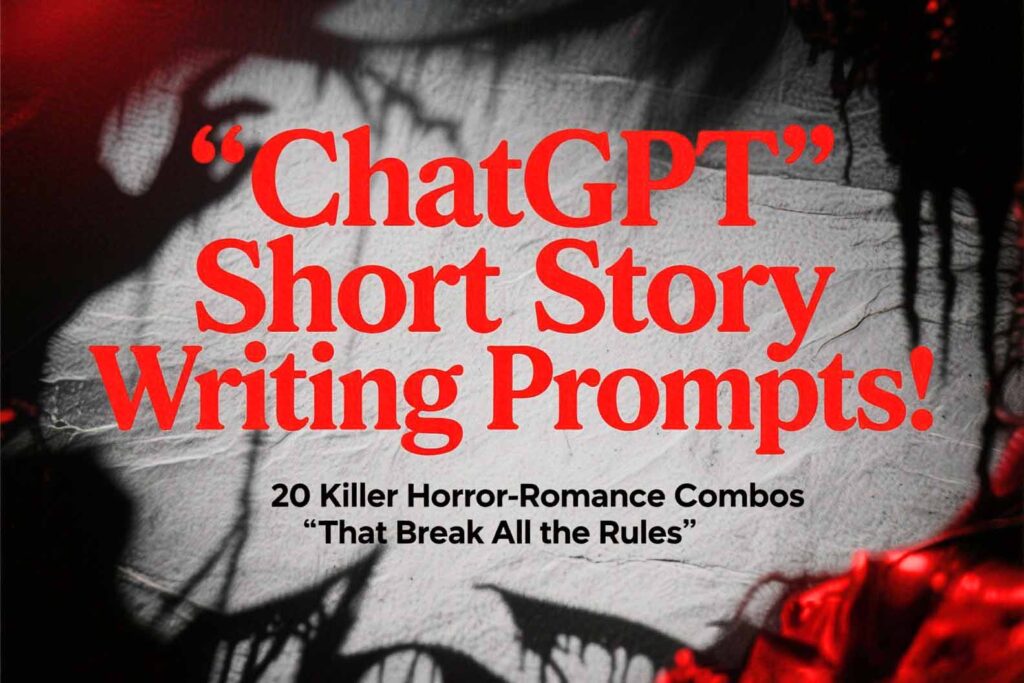10 Deadly Mistaks to Avoid with AI Book Writing Tools (And How to Fix Them!)
Table of Contents
The digital age has ushered in a revolution for authors, and at the forefront are AI book writing tools. These sophisticated platforms promise to accelerate the writing process, shatter writer’s block, and even help generate fresh ideas, making the dream of authorship more accessible than ever. For many, they are a game-changer, offering a pathway to efficiently write books with AI.
However, this powerful technology is not a magic wand. Aspiring and even seasoned authors often stumble into critical AI writing mistakes, leading to generic content, frustrating roadblocks, or even ethical quandaries. The allure of speed can sometimes overshadow the nuances required for quality AI book authoring.
This article will expose the 10 most deadly and common AI errors users make when leveraging AI book writing tools. More importantly, it will provide actionable strategies and practical fixes to sidestep these pitfalls. By understanding and avoiding these mistakes, you can harness the true potential of AI, transforming it from a potential source of frustration into an invaluable co-author on your journey to a compelling, well-crafted book. Avoiding these traps will lead to higher quality manuscripts, significant time savings, and an enhancement of your own creative output.
Why Are AI Book Writing Tools So Popular?
The surge in popularity of AI book writing tools isn’t surprising. They offer tangible benefits that resonate deeply with writers:
- Speed and Efficiency: AI can draft content significantly faster than humans, ideal for initial outlines or first drafts.
- Overcoming Writer’s Block: When inspiration wanes, AI can offer suggestions, prompts, or even draft sections to get you moving again.
- Idea Generation: AI can brainstorm plot points, character ideas, chapter titles, or research angles.
- Accessibility: These tools lower the barrier to entry for individuals who may not be traditional writers but have stories to tell or knowledge to share, facilitating the ability to write books with AI.
Despite these advantages, the path to successful AI book authoring is paved with awareness of its limitations.
The 10 Common Mistakes to Avoid When Using AI Book Writing Tools
Navigating the landscape of AI book writing tools requires more than just knowing which buttons to press. It demands a strategic approach to avoid common pitfalls that can undermine your project.
1. Mistake: Over-Reliance and Expecting a Finished Masterpiece
- Explanation: One of the most significant AI writing mistakes is treating the software as an autonomous author, expecting it to produce a flawless, publishable book with minimal input.
- Consequences: This leads to generic, often soulless writing that lacks a personal voice, unique insights, and can even contain factual inaccuracies or nonsensical “AI hallucinations.” The human element of creativity and critical thinking gets lost.
- Solution/How to Avoid: View AI book writing tools as a co-pilot, an assistant, or a powerful starting point—not the entire flight crew. Your role as the author, editor, and creative visionary is indispensable. Use AI for brainstorming, drafting, or overcoming specific hurdles, but always be prepared to heavily edit, rewrite, and infuse your unique perspective.
[Image: A writer looking thoughtfully at a computer screen displaying an AI writing interface. Alt: Author thoughtfully using AI book writing tools for assistance.]
2. Mistake: Ignoring Crucial Human Editing and Fact-Checking
- Explanation: Believing that AI-generated text is inherently polished and accurate, and thus publishing it verbatim or with only a cursory glance.
- Consequences: The output can be riddled with grammatical errors, awkward phrasing, repetitive sentences, and, most critically, factual inaccuracies or misleading information. This severely damages credibility and reader experience.
- Solution/How to Avoid: Implement a rigorous, multi-stage editing process. This includes your own thorough self-edit, potentially peer reviews, and ideally, a professional editor. Triple-check every fact, figure, date, and claim, especially for non-fiction. Remember, AI learns from data that might be outdated or biased.
3. Mistake: Using Vague, Generic, or Poorly Constructed Prompts
- Explanation: The “garbage in, garbage out” principle applies perfectly to AI book writing tools. If you provide unclear, overly broad, or lazy prompts, the AI has little to work with.
- Consequences: The AI will likely produce irrelevant, off-topic, or low-quality content that misses the mark, leading to wasted time, credits (if applicable), and frustration. These are common AI errors stemming from user input.
- Solution/How to Avoid: Master the art of prompt engineering. Craft detailed, specific prompts. Clearly define the desired tone (e.g., formal, witty, academic), style, target audience, approximate length for the section, key points to include, and any keywords to focus on. Providing examples of text you like can also guide the AI effectively. Don’t be afraid to iterate and refine your prompts.
4. Mistake: Neglecting Originality and Potential Plagiarism Concerns
- Explanation: Assuming that all output from AI book writing tools is 100% original. AI models are trained on vast datasets of existing text, and while they aim to create novel combinations, similarities to source material can occur.
- Consequences: Unintentional plagiarism can lead to serious copyright issues, damage your reputation as an author, and result in your work being de-listed from platforms.
- Solution/How to Avoid: Always run AI-generated content through reliable plagiarism checkers. More importantly, don’t just copy-paste. Actively paraphrase, rewrite, and inject your own unique insights, examples, and analyses to make the content truly your own. If the AI provides information that seems to come from a specific source, try to find and cite that original source properly.
5. Mistake: Failing to Infuse Personal Author Voice and Style
- Explanation: Allowing the AI’s default or generic writing style to dominate your book, resulting in a manuscript that doesn’t sound like you or lacks a distinctive character.
- Consequences: The book may feel impersonal, lack a strong connection with readers, and exhibit an inconsistent tone, especially if you’re blending AI-generated sections with your manually written parts. This is a crucial aspect of AI book authoring.
- Solution/How to Avoid: Actively guide the AI on your preferred voice. For example, instruct it to “write in a compassionate yet authoritative tone” or “use humorous analogies.” Most importantly, extensively edit and rewrite sections. Weave in your personal anecdotes, unique perspectives, characteristic turns of phrase, and the stylistic choices that define you as a writer.
6. Mistake: Not Understanding the AI’s Limitations and Strengths
- Explanation: Expecting AI book writing tools to excel at tasks they are not (yet) designed for, such as conveying deep emotional nuance without specific guidance, structuring complex, multi-layered plots independently, or conducting cutting-edge, novel research.
- Consequences: This leads to frustration, subpar output, and wasted effort trying to force the tool to perform beyond its capabilities.
- Solution/How to Avoid: Research the specific AI book writing tools you intend to use. Understand their core strengths (e.g., brainstorming, drafting, summarizing, rephrasing) and be realistic about their limitations. Recognize where human intellect, creativity, and emotional intelligence are paramount and cannot be delegated.
[Image: Graphic showing a human hand and a robot hand working together on a manuscript. Alt: Human-AI collaboration for effective AI book authoring.]
7. Mistake: Poor Structuring and Lack of Coherent Narrative Flow
- Explanation: Relying on AI to generate large, disconnected chunks of text without providing a clear, human-created outline or overarching plan for the book.
- Consequences: The resulting manuscript is likely to be disjointed, confusing for the reader, lacking a clear argument or plot progression, and potentially repetitive. One of the common AI errors is not seeing the bigger picture without guidance.
- Solution/How to Avoid: Always create a detailed outline before you start using AI to draft content. This roadmap is crucial. Use the AI to flesh out individual sections or chapters based on your outline, and then take on the vital role of manually weaving these sections together, ensuring smooth transitions, logical flow, and a cohesive narrative.
8. Mistake: Disregarding Copyright, Ethical Considerations, and Transparency
- Explanation: Using AI-generated content without considering potential copyright infringements (especially if the AI was trained on copyrighted material without proper licensing) or failing to be transparent about AI usage where it might be ethically appropriate or expected by readers.
- Consequences: This can lead to legal complications, ethical dilemmas regarding authorship, and a potential loss of trust from your audience if they feel misled.
- Solution/How to Avoid: Familiarize yourself with the terms of service of your chosen AI book writing tool, particularly regarding content ownership and usage rights. Stay informed about evolving ethical guidelines for AI in creative works. Decide on your level of transparency with readers (e.g., an acknowledgment if AI played a significant assistive role). [External Link Idea: Link to an article on AI ethics in publishing from a reputable source like the Authors Guild or similar].
9. Mistake: Skipping Iteration and Refinement of AI Output
- Explanation: Accepting the very first piece of text the AI generates as the final version, without exploring alternatives or pushing for better quality.
- Consequences: You’ll likely end up with subpar content that could have been significantly improved with a bit more effort. This is a common AI writing mistake born from a desire for quick results.
- Solution/How to Avoid: Treat AI content generation as an iterative process. Don’t settle for the first output. Ask the AI to regenerate, re-prompt with slight variations, request different tones or approaches for the same topic. Combine the best elements from multiple outputs. Then, critically refine and polish the chosen text.
10. Mistake: Choosing the Wrong AI Tool for Your Specific Book Project
- Explanation: Using a generic AI writing assistant when a specialized AI book writing tool—or one specifically designed for fiction versus non-fiction, or even a particular genre—would be far more effective.
- Consequences: The output may be less targeted, requiring more extensive editing. The tool might lack essential features for your project, such as character development modules for fiction, or citation management for academic non-fiction.
- Solution/How to Avoid: Thoroughly research the available AI book writing tools before committing. Consider your genre (fiction, non-fiction, mystery, sci-fi, self-help, academic), the specific features you need (outlining, character generation, plot development, research assistance), and your budget. Read reviews, compare features, and utilize free trials whenever possible. [Internal Link Idea: If you have an article reviewing different AI book writing tools, link it here].
Best Practices for Maximizing AI Book Writing Tools
Beyond just avoiding mistakes, here are some proactive strategies to get the most out of your AI book writing tools:
- Start with a Solid Human-Created Outline: AI thrives on clear direction. A detailed outline created by you provides the necessary framework.
- Use AI for Specific, Targeted Tasks: Leverage AI for what it does best: brainstorming plot twists, drafting initial paragraphs for a tricky section, summarizing research, rephrasing awkward sentences, or generating alternative chapter titles.
- Blend AI Output with Your Own Writing: The most powerful approach is a hybrid one. Seamlessly integrate AI-assisted sections with your original prose, ensuring a consistent voice and style.
- Maintain Absolute Creative Control: Remember, you are the author. The AI is a tool, albeit a very advanced one. The final vision, creative decisions, and narrative direction must always be yours.
- Stay Curious and Keep Learning: The field of AI is evolving at an incredible pace. Stay updated on new tools, features, and best practices for AI book authoring.
[Image: A book cover with a subtle AI-themed design element. Alt: Successfully published book using AI book writing tools effectively.]
The Future of AI in Book Writing: A Collaborative Approach
The future of writing isn’t about AI replacing human authors; it’s about collaboration. AI book writing tools will likely become even more sophisticated, acting as increasingly powerful assistants that augment human creativity, help overcome mundane tasks, and open up new possibilities for storytelling and knowledge sharing. The emphasis will remain on the human-AI partnership to produce the most compelling and impactful works.
Conclusion
AI book writing tools offer a tantalizing glimpse into the future of authorship, promising speed, assistance, and new avenues for creativity. However, like any powerful tool, they come with a learning curve and potential pitfalls. By consciously avoiding these 10 deadly AI writing mistakes—from over-reliance and poor prompting to neglecting editing and ethical considerations—you can transform AI from a potential source of frustration into an invaluable ally.
Remember, the goal is to write books with AI, not to have AI write books for you. When used thoughtfully, strategically, and with a keen understanding of its strengths and weaknesses, AI can significantly enhance your productivity and help you bring your stories and ideas to the world more effectively. Mastering AI book writing tools is about smart, informed usage, not blind automation.
What are your biggest challenges or successes with AI book writing tools? Share your experiences and any other common AI errors you’ve encountered in the comments below!
Frequently Asked Questions (FAQ)
- Q1: Can AI really write a whole book by itself?
- A: While AI book writing tools can generate extensive text, a high-quality, publishable book still requires significant human input for outlining, editing, infusing a unique voice, rigorous fact-checking, and ensuring overall narrative coherence. AI is best utilized as a powerful assistant in the AI book authoring process.
- Q2: Is content generated by AI book writing tools considered plagiarism?
- A: Not inherently, as AI aims to create novel text. However, because it learns from vast datasets, there’s a small chance it might generate content very similar to its training data. This is why it’s crucial to always use plagiarism checkers and, more importantly, to significantly edit, rewrite, and add your unique perspective to any AI-generated text to ensure originality and avoid AI writing mistakes related to unoriginal content.
- Q3: What’s the most important skill for using AI book writing tools effectively?
- A: Two skills are paramount: prompt engineering (the ability to craft clear, specific, and detailed instructions for the AI) and critical editing skills (the ability to evaluate, refine, and enhance the AI’s output). Without these, you’re unlikely to leverage the full potential when you write books with AI.
- Q4: How do I maintain my author’s voice when using AI?
- A: To avoid one of the more subtle common AI errors, actively guide the AI by providing examples of your writing style in prompts or instructing it on the desired tone. Most critically, heavily edit and rewrite the AI’s output, infusing your personal anecdotes, characteristic phrasing, and unique worldview to ensure the final text truly reflects your authorial voice.




